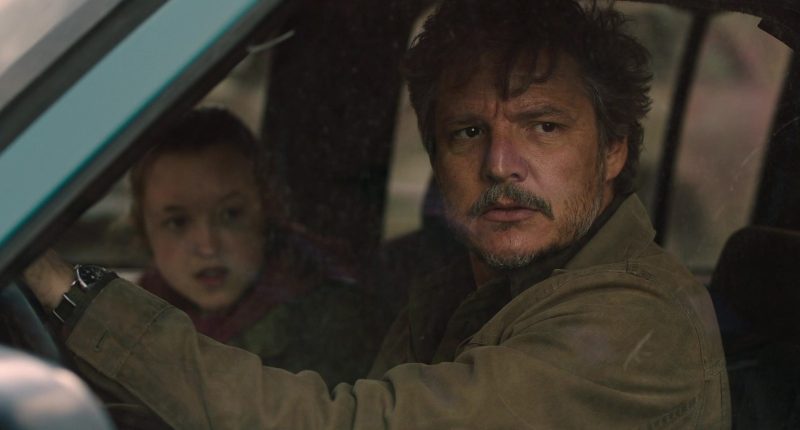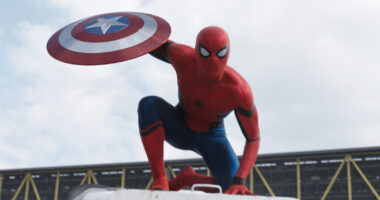Share this @internewscast.com
When Naughty Dog launched “The Last of Us” in 2013, it captivated gamers, setting a new standard for storytelling within the gaming world. The debut season of HBO’s adaptation of “The Last of Us” received unanimous acclaim from critics, with many lauding the narrative for its stark realism and emotional depth.
Joel (Pedro Pascal) and Ellie (Bella Ramsay) are incredibly engaging figures, and observing their relationship unfold has been a captivating journey. However, even as viewers become immersed in the intricately crafted story of “The Last of Us,” it’s easy to overlook the numerous details within the show’s universe that are utterly absurd. Like many outstanding post-apocalyptic series, “The Last of Us” is teeming with implausible plot conveniences and downright ridiculous elements that defy logic in a world supposedly 20 years into a zombie-esque outbreak.
No one suggests these quirky details spoil “The Last of Us,” and in our Season 2 review, we highlighted that the show continues to improve. Nonetheless, taking a moment to recognize everything we tend to overlook in “The Last of Us” might actually enhance your appreciation of the show’s intricate storytelling.
The grounded infection isn’t very realistic
Every apocalypse story has to ask its audience for some suspension of disbelief, but “The Last of Us” goes out of its way to make its apocalyptic infection seem realistic. The HBO series shows us some pivotal moments from the early days of the outbreak, while explaining that the infection itself comes from a brain-manipulating fungus called cordyceps. In real life, cordyceps infects the bodies and brains of various insects, but the show proposes that the fungus could evolve — possibly due to climate change — to infect humans.
Of course, that’s not actually how anything works. Speaking with Vox, Utrecht University mycologist and professor of biology Charissa de Bekker explained that the various fungi capable of taking over insect bodies put a lot of work into gaining that ability. The fungi have evolved over millions of years, and each type of fungus is specialized for just a single species of insect, so we should definitely consider ourselves to be safe. “Spreading from ant to human is just such a big jump,” de Bekker said. Luckily, “The Last of Us” does such a good job selling not just cordyceps but also the infected humans it controls that we don’t have any trouble ignoring the reality.
Joel avoiding the infection is silly
The fungus that collapses society in “The Last of Us” doesn’t start infecting people via mushroom pizza. Instead, the show’s version of cordyceps contaminates flour and quickly ends up in the entire world’s food supply. That setup helps sell the sudden, all-encompassing nature of the infection, but it also leads to an extremely silly coincidence that we all have to choose to ignore: the Atkins diet saves Joel’s life.
The first episode of “The Last of Us” introduces Joel and his daughter Sarah, who have exceedingly normal lives. When Joel isn’t working or taking care of his daughter, he’s apparently consuming health trends because the show makes a joke about him being on the Atkins diet. Joel mentions the diet to his neighbor as an excuse to avoid eating her cooking, but the joke is also a subtle way to cue audiences into how Joel avoids the infection: Atkins is a no-carb diet. Joel is diligently avoiding those carbs in the lead-up to the apocalypse, so his trendy 2000s diet arguably helps him survive. Does that make keto the modern day apocalypse-avoidant diet?
What state is the world really in?
“The Last of Us” goes further than many other post-apocalyptic stories in explaining how the not-quite-zombie infection begins. What the show does skip over, though, are the decades between the initial outbreak and the year when Joel’s and Ellie’s story really starts. We don’t get much of a look at what’s happened to society on a larger scale, but things definitely aren’t looking good.
In Boston the Federal Disaster Response Agency (FEDRA) appears to manage the city through a form of martial law, but FEDRA doesn’t seem like a particularly widespread group. As soon as Joel and Ellie leave the city, they encounter all kinds of roving gangs and absolutely nothing approaching a legitimate government. Some cities are completely abandoned, while others are controlled by megalomaniacs. FEDRA seems to be the only governmental agency left, but it’s unclear how much territory they actually control. Kansas City has overthrown FEDRA, but the Fireflies still seem to be resisting them across the country.
“The Last of Us” uses amazing special effects to transport us to its apocalyptic world, but the state of that world doesn’t actually make much sense. The particular way that society has broken apart is great for the drama of Joel’s trip across the country with Ellie, but if we want to go along for the ride, we have to ignore the fact that the world seems designed to serve the story.
Where are all the masks?
It’s not just infected humans running around causing chaos in “The Last of Us.” We see that the cordyceps fungus is alive and well even 20 years after the initial outbreak. Buildings are covered with fungal growths, and cordyceps has crawled its way into many of the dank places abandoned by humanity. The characters in “The Last of Us” take plenty of precautions with respect to the infected, but they hardly do anything to defend themselves against the fungus itself.
In Naughty Dog’s “The Last of Us” games, cordyceps spreads via fungal spores that fill the air of closed-up rooms and decrepit buildings. The game characters wear masks to protect themselves, though arguably even they are a little too comfortable with ignoring precautions. In the show, the fungus spreads through its icky tendrils, so the airborne risk isn’t as intense. That said, Tess’s death in Season 1, Episode 2 shows us that there’s still a case to be made for wearing a mask at all times. Maybe big plastic respirators are hard to come by in this particular apocalypse, but you’d still expect people to be doing everything in their power to avoid contact with any kind of fungus.
Joel and Ellie take a classic road trip
You could call “The Last of Us” a horror show or a post-apocalyptic tale, but it’s also a road trip story. Joel and Ellie leave Boston in the very first episode, and their cross-country journey carries the plot all the way through the first season. Anyone who’s played “The Last of Us Part II” knows that there’s plenty more travel in store for the show’s future. The story wouldn’t be the same without Joel and Ellie hitting the road together, which is why we’re all willing to ignore the fact that their initial means of travel doesn’t make any sense at all.
Joel and Ellie pick up a car from Bill’s (Nick Offerman) house and use it to drive all the way to Kansas City. We know that Bill was a serious prepper, but it’s still hard to understand how he’d have any usable gasoline after two decades of post-apocalypse living. It’s even harder to understand how Joel and Ellie would be able to scavenge enough gas to get them halfway across the country. Gasoline goes bad in three to six months, which is how all the “Mad Max” movies have wrung decades of drama out of survivors fighting over oil pumps and refineries. Realistically, no one in “The Last of Us” should be driving, but that doesn’t make Joel and Ellie’s trip any less compelling.
The mall is still alive
In Season 1 of “The Last of Us,” the episode “Left Behind” adapts a prequel story that was included in the original game as downloadable content (DLC). The story follows Ellie before she meets Joel and explores her relationship with another young girl named Riley (Storm Reid). The two of them are growing up in Boston under FEDRA rule, and their daily life is as structured as a military academy. In the episode, Ellie and Riley sneak out to an old abandoned mall and have an incredible time exploring relics from the pre-infection era.
The story of “Left Behind” plays a huge role in developing Ellie’s character and fleshing out some aspects of the show’s larger universe. The performances in the episode are heartfelt and utterly gut-wrenching, which helps make the nonsensical parts of the story easier to ignore.
The fact that the mall in “Left Behind” can be powered up at all leaves us with some massive questions about the electrical infrastructure of post-apocalyptic Boston, but the episode also calls into question FEDRA’s control over the city. In some establishing shots, we see that the mall Ellie sneaks into is huge and very bright once all the power is on. Despite that, no one defending or overseeing the city seems to notice that the building has suddenly come back to life.
There’s so much casual gun use
The scenery in “The Last of Us” is enthralling and shows us an incredibly detailed and somewhat disturbing look at how nature would go about reclaiming city landscapes abandoned by humanity. We see so many buildings toppled and overrun with plant life, and we see streets flooded with unmanaged rainwater and plenty of wildlife. “The Last of Us” clearly demonstrates that our cities need constant maintenance to function, but the show doesn’t stick as closely to reality when it comes to guns.
Every time Joel, Ellie, or any other character picks up a random gun from the ground, it fires without any problems. We never see guns getting jammed, but we also don’t see anyone bothering to clean and maintain their weapons. In real life, guns get jammed all the time, and they require regular care to keep functioning properly.
The fact that we don’t see any gun-related accidents might be more forgivable if we didn’t see characters like Joel confidently charging into battle with weapons that, for all he knows, could be completely useless. Of course, if the show truly committed to realism, we’d be getting way fewer shootouts and killer action scenes, so this is yet another deviation from reality that we’re willing to forgive.
How is Jackson so well stocked?
Jackson is basically the only place in the entire continental United States where Joel and Ellie can find some peace. The community has a defensive wall, plenty of guns, and more than enough people willing to defend the town with their lives. When Joel and Ellie arrive in Season 1, they find that Jackson is a thriving town with plenty of food and shelter as well as a few amenities, like a functioning film projector, from the olden days.
The show points out that the people of Jackson are completely interdependent, sharing food and responsibilities throughout the community, and that goes a long way toward explaining how Jackson has managed to amass so many resources. On the other hand, there are some aspects of life in Jackson that seem far-fetched for a world that’s decades deep in an apocalypse.
Small decorations like string lights seem as though they’d be a drain on electricity and difficult to maintain for decades on end. Then there’s bigger issues, like how the town manages to keep all the single-family houses so pristine. When Season 2 began airing, some viewers pointed out that all the clothes in Jackson are squeaky clean and undamaged, not like clothing that’s been meticulously patched and repaired for years. We’ve got questions about Jackson’s supply chain, but none of them really distract from the story that “The Last of Us” is telling.
Joel’s injuries stretch believability
Like a man based on a video game character, Joel seems to have multiple lives during Season 1 of “The Last of Us.” He overcomes all kinds of unfavorable odds throughout the story, and the fact that he lives for as long as he does is an absolute miracle. But for all of Joel’s lucky breaks, there’s one injury in particular that he only overcomes because of divine — or authorial — intervention. At the very end of Season 1, Episode 6, titled “Kin,” Joel is viciously stabbed by another survivor, and Ellie is forced to carry him to safety. Ellie treats his wounds as best she can with limited supplies, and Joel ends up recovering at the exact moment the story needs him to.
Joel’s survival from that wound is one of the most unbelievable events in “The Last of Us,” but the show actually toned down his injury from the game. Instead of being stabbed, video game Joel falls several stories and lands on an exposed piece of rebar. Game Joel should bleed out the instant he pulls himself from the rebar, but he ends up recovering the exact same way as his TV show counterpart.
Either version of events is pretty far-fetched, but Joel’s injury is a pivotal moment for his relationship with Ellie. By helping him recover, Ellie solidifies their relationship, and the two of them truly learn that they can trust each other no matter what. We all love Joel and Ellie so much that we’re willing to look past this particular bit of narrative convenience.
Ellie’s immunity is far-fetched
“The Last of Us” TV show adds quite a few scenes that were never in the original game, and the first season’s finale includes some additional backstory for Ellie and a fun cameo for game fans. Ashley Johnson, the woman who voiced Ellie in the games, plays Ellie’s mother Anna in a scene that potentially explains how Ellie got her immunity.
Anna gets bitten while fighting off an infected person, and just a few moments later she goes into labor. The implication is that being exposed to just a small amount of the infection right before she’s born gives Ellie the ability to resist cordyceps. Ellie’s brief exposure to cordyceps follows the same logic as a vaccination: Her body is presumably able to fight off an incredibly small amount of the infection, and in doing so learns how to resist it permanently. The only problem is, that’s not how things work with fungi.
In real life (via the American Society for Microbiology), researchers are looking into anti-fungal vaccines, but there aren’t any currently being used to treat people. Fungal infections are a whole different beast than viral infections, so by setting up a somewhat believable infection with mutated cordyceps, “The Last of Us” inadvertently shreds any realism surrounding Ellie’s immunity — which the plot hinges on. Still, Johnson’s cameo was one of the best Easter eggs in “The Last of Us,” so this is yet another detail we’re willing to ignore.
The Fireflies’ plan doesn’t make sense
The Fireflies see Ellie as the key to saving all of humanity. She’s quite possibly the only person on the planet who’s immune to cordyceps, and the Fireflies hope that her immunity will help them find a cure for the infection. We’ve already established that vaccinating people against a fungal infection isn’t a possibility in the real world, but even if we look past that small detail, the plan for Ellie makes absolutely no sense.
Within hours of Joel and Ellie arriving at the Firefly lab in Salt Lake City, the Fireflies are pulling Ellie into an operating room. That suggests that they don’t feel the need to do many tests on Ellie or study her biology in depth at all. Instead of doing additional research, the Fireflies immediately decide to perform an operation that will kill the only immune human in history. Maybe the Fireflies have access to some secret cache of fungal research that they’ve been studying while Joel and Ellie travel across the country, but it really seems like the Fireflies are taking a huge risk solely on a scientific hunch.
The science doesn’t make any sense, but neither does the Fireflies’ approach to handling Joel and Ellie. In retrospect, the Fireflies should explain the situation, give Ellie a choice in the matter, and allow Joel to say goodbye. Instead they all but guarantee that Joel will fight back against them, and because of that, the Fireflies themselves bear some responsibility for how things turn out at the lab.







